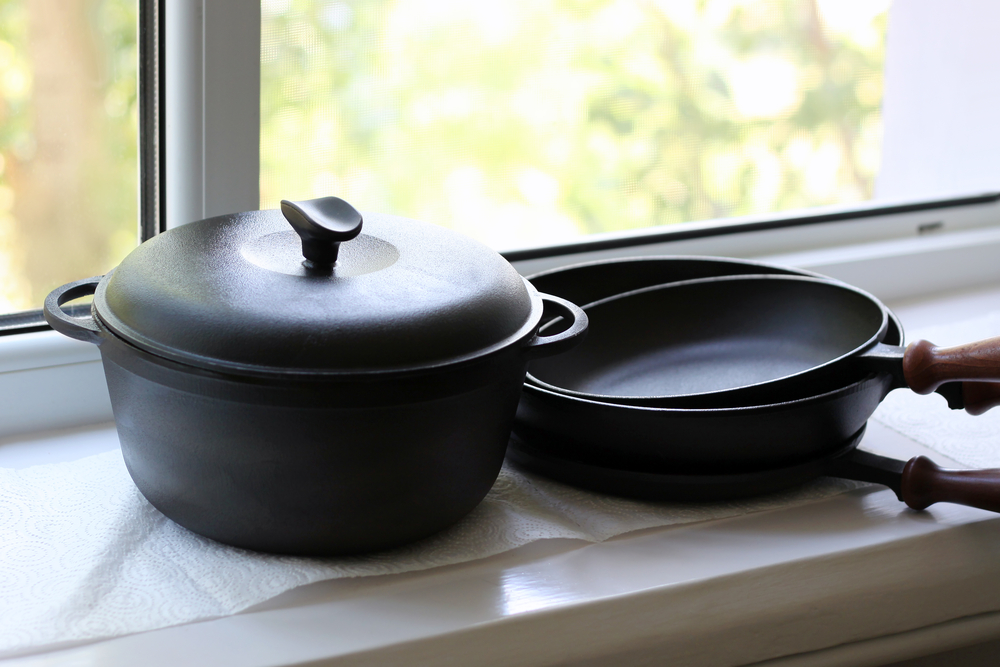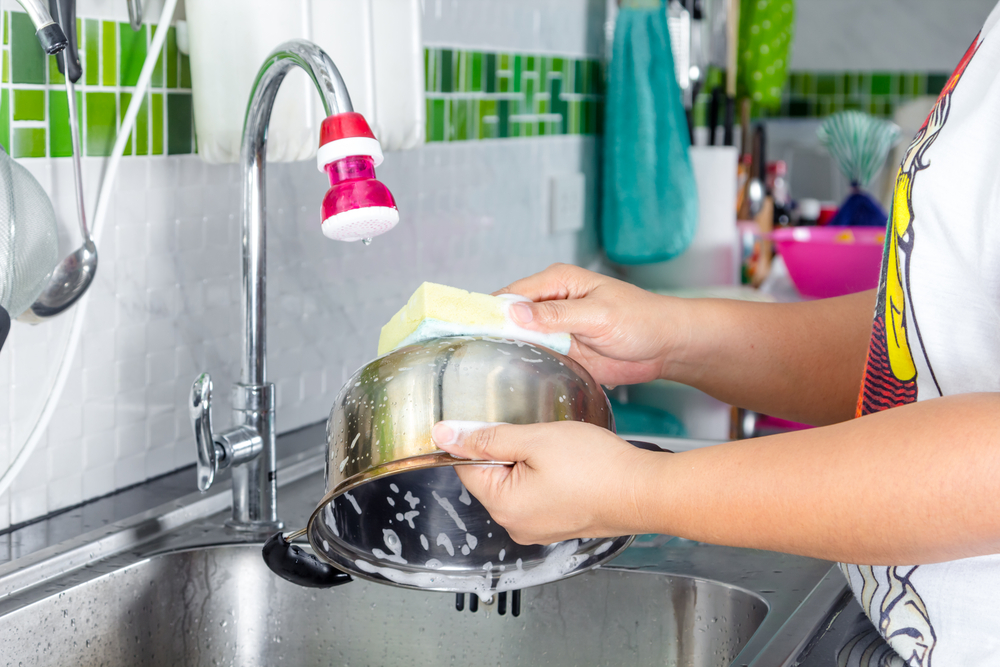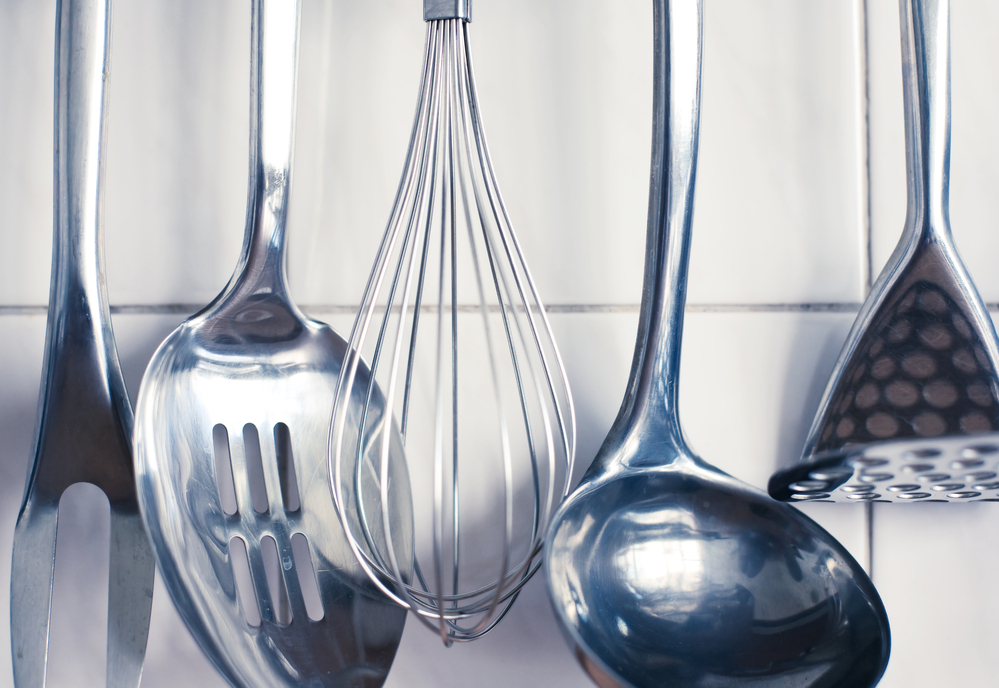If you are looking at cast iron cookware, chances are you’ve also seen some pans advertised as hard anodized iron cookware. They can look pretty similar however, the feel of the two products is very different. So, what’s the main difference between hard anodized vs cast iron cookware?
Hard anodized cookware is iron cookware that has been treated. The treatment changes the composition of the metal and makes the outer layer more resistant to chipping and rust, two issues that commonly plague cast iron cookware. It also makes the pan non-stick.
Before picking your new set of cookware, it is important to learn about the uses of both as well as their pros and cons.
Hard Anodized vs Cast Iron Cookware Overview
Cast iron cookware is heavy, dark-colored metal cookware that has been used in the kitchen for hundreds of years. It is considered to be more versatile than many other types of pans and can be used for an infinite number of recipes. It imparts a good flavor to the food and is recommended for people that have iron deficiencies as it can increase the iron content of the food.
Hard anodized iron cookware is basically cast iron that has been strengthened slightly. It is a non-stick pan that is less fragile. However, it still maintains many of the benefits of cast iron including a good heat tolerance and the ability to heat evenly.
What is Hard Anodized Iron?
Hard anodized iron is iron that has been treated with an electrolytic passivation process. This changes the metal’s composition and makes the iron’s outer layers harder and more resistant to physical damage and chemical damage like rusting.
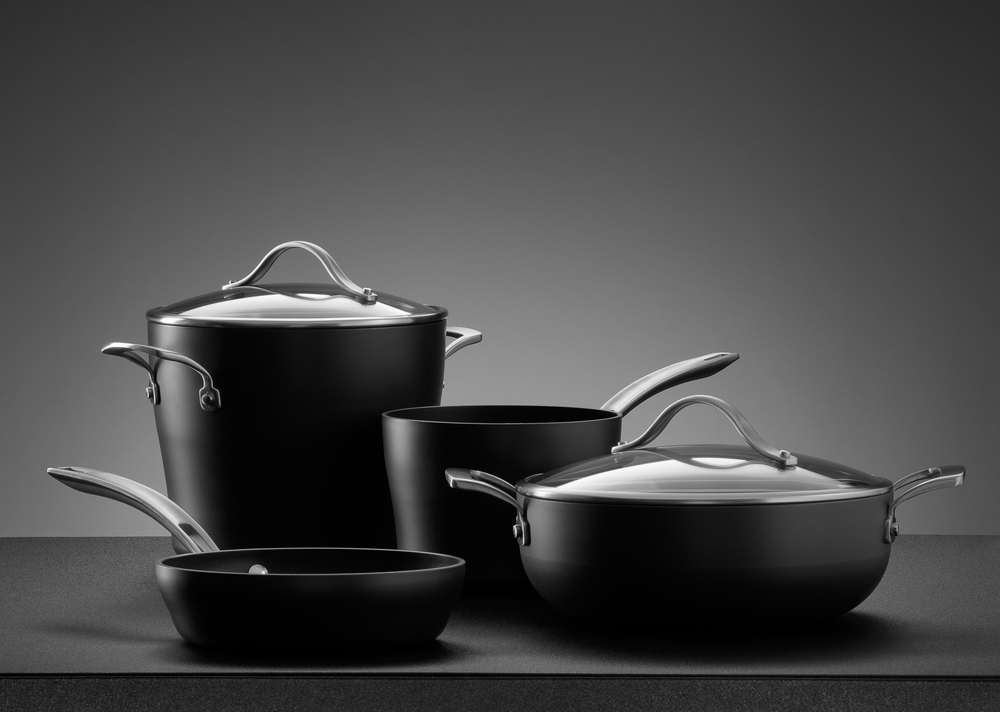
Hard anodized iron also has a better base for paint which makes it a popular choice for metals that are going to be painted over.
Both of these things make hard anodized iron a popular choice for cookware or iron tools. They are more durable and less likely to break if they get knocked around a bit. As a matter of fact, hard anodized iron is 30% stronger than stainless steel which is often considered to be one of the most durable metals on the market.
Hard anodized iron pans are also non-stick making them a popular, more durable alternative to Teflon pans. They are good for cooking foods like eggs, which are prone to sticking, and are very easy to clean, typically just requiring a gentle wipe to remove any stuck food.
However, the process does tend to make the metal more porous which means that water and other liquids can seep into the metal more easily. To prevent this, most companies will cover hard anodized iron with a coating to seal the outer layer of metal.
Pros
- Easy to clean
- Durable
- Non-stick
- Good heat conductor
Cons
- Must be hand-washed
- Does not “season” as well as cast iron
- Not the best for high heats
What is Cast Iron?
Historically, cast iron has been one of the most popular materials used for cookware. It works well on a variety of heats and has good heat conductivity without a different type of metal core needing to be added.
It is very hard, but also relatively brittle. It can also be prone to rusting if not taken care of properly.
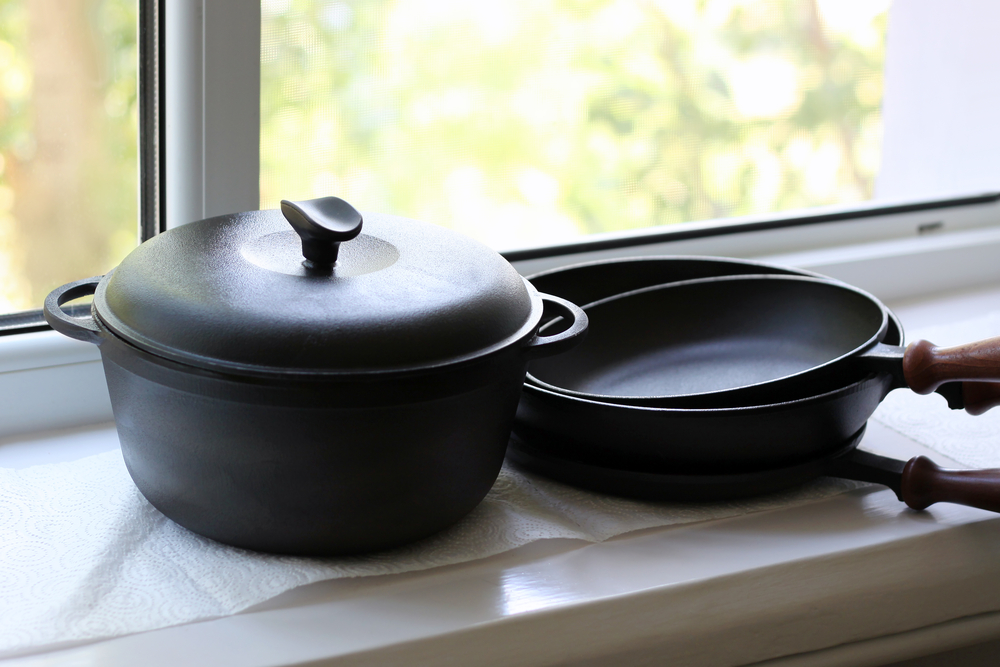
Cast iron can be thought of as the original non-stick pan. When cast iron pans are freshly made they can be some of the worst pans for sticking and require a lot of oil to prevent the food from sticking to the bottom. However, with a careful seasoning process, you are able to make a cast iron pan that functions very similarly to a non-stick pan.
To season a cast iron pan you will need a neutral oil, like canola oil, and plenty of patience. The first step is wiping a thin layer of oil all over the pan. Use just enough to coat the pan so it becomes slightly shiny. There should be no excess oil dripping off and the pan should feel almost dry.
Once the pan is coated in oil you will want to place it in a 350-degree oven for one hour. Make sure to place a pan lined with tin foil on the rack beneath your cast iron. This will help to catch any excess oil that may drip off and prevent it from getting into your oven. After an hour let the pan sit in the oven until it is fully cooled down.
If your cast iron is brand new you will need to repeat this process several times. You will know that your cast iron has been seasoned enough when it has a smooth finish. If you are simply refreshing an older pan, you may only have to repeat the seasoning process once or twice before it is ready.
After a cast iron pan has been seasoned you should never wash it with soap and water. This will break through the seasoning and will result in a stripped pan that will need to be seasoned again.
Pros
- Versatile
- Works well with high temperatures
- Durable
- Imparts added flavor
Cons
- Cannot be washed normally
- Can be brittle
- Prone to rust if not cared for properly
What are the Differences Between Cast Iron and Hard Anodized Cookware?
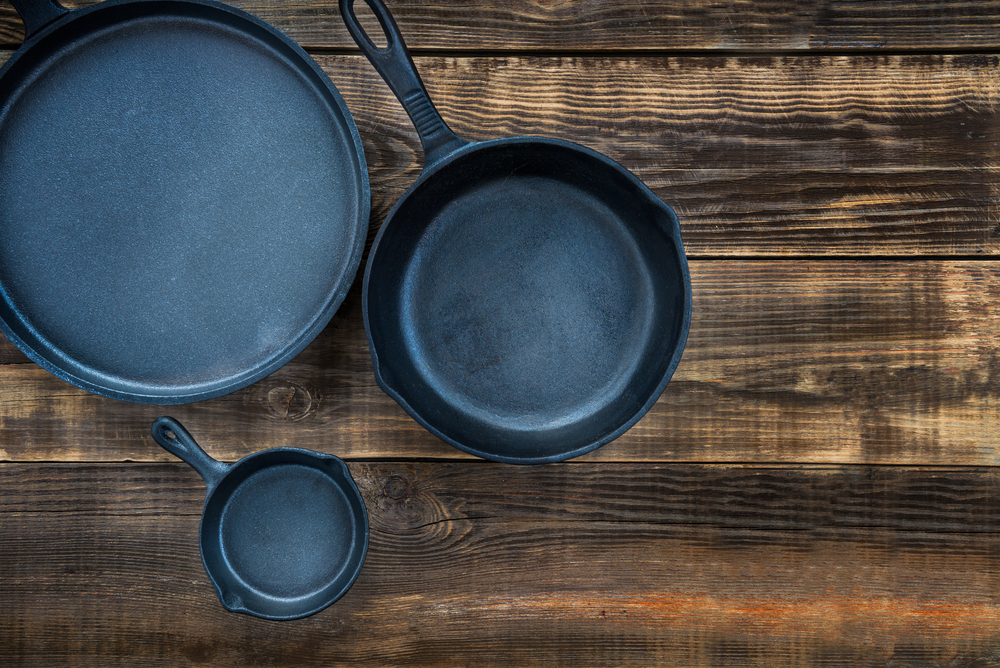
Before deciding if you should get cast iron or hard anodized cookware there are several differences between the two that you should consider before making your choice.
Uses
Cast Iron
Out of the two types of cookware, cast iron is typically considered the more durable of the two. It is safe to use both on the stovetop and inside the oven. This is partially because of the metal’s high heat tolerance and because they rarely have plastic handles. Cast iron pans are typically completely made from metal which makes them ideal for use in the oven.
Cast iron pans are also great for searing. They are able to reach high temperatures and hold that temperature very well. This makes them ideal for searing meats where the pan needs to be at a very high temperature so all sides of the meat can be evenly seared while the inside is minimally cooked.
Hard Anodized Iron
Hard anodized can also technically be used in the oven, but only if it does not have a plastic or grippy handle. If it has a plastic handle then it could melt in the oven which could drip down and ruin your oven. Due to this, it is often recommended that you reserve your hard anodized iron cookware for stovetop use.
One of the main benefits of using hard anodized iron is that it is a type of non-stick pan. This makes it a great option for cooking foods like eggs or high-protein meats like chicken and lean beef. All of these foods are prone to sticking when used in a regular pan and will require a large amount of oil to prevent sticking.
Heat Conduction
Since both hard anodized iron and cast iron have an iron base, they are known for even heating and good heat retention. This also makes them ideal for baking where you want the pan to heat up and maintain an even temperature throughout the baking process.
Durability
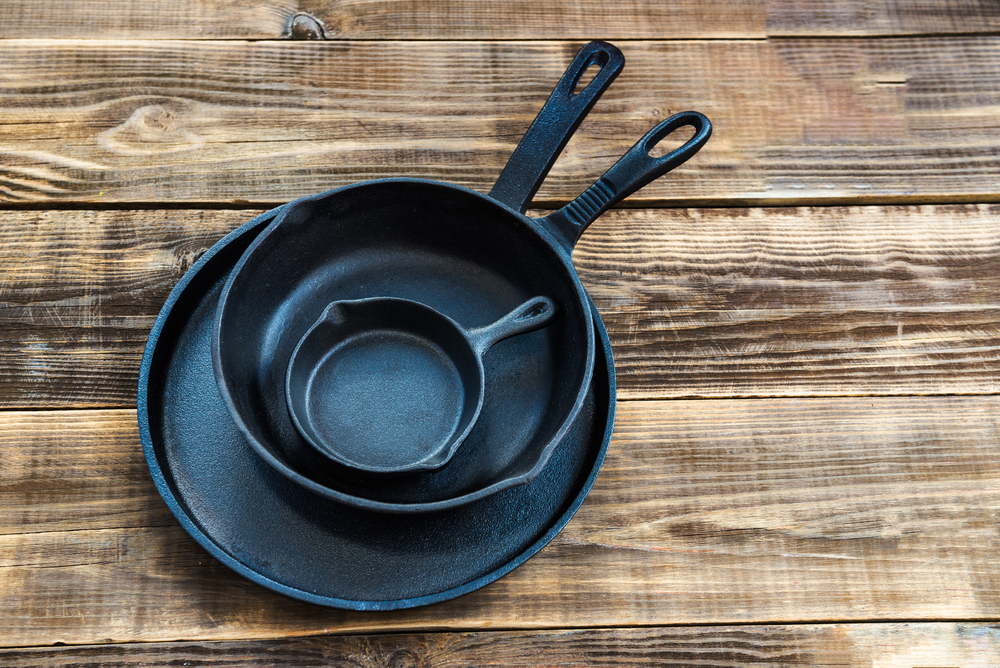
Cast Iron
Although cast iron is generally considered very durable, it does have its weaknesses. For one, cast iron is very sensitive to moisture and can rust easily if left in a moist environment. It also cannot be washed with soap and water as this will ruin the seasoning and make it even more prone to rusting.
Cast iron can also tend to be brittle, leaving it vulnerable to chips. If it falls from a height, it is likely to break rather than dent, unlike many other types of pans.
Hard Anodized Iron
Out of the two types of iron, hard anodized iron is considered to be more durable than cast iron due to the treatment process it goes through. This makes it less likely to chip and also less prone to rust.
Unlike cast iron, you can hand wash hard anodized iron with soap and water without worrying about ruining the coating or causing the pan to rust.
Food Reactivity
Cast Iron
When cooking with cast iron, it is generally recommended to avoid using acidic foods. Foods like tomatoes, citrus fruits, and vinegar can break down the seasoning of the cast iron resulting in you having to go through the seasoning process once again to make the pan usable.
Hard Anodized Iron
Since hard anodized iron is more durable and has a protective coating, you do not need to avoid any foods when using hard anodized iron. However, just like with any pan, make sure to not let acidic foods sit too long after cooking or it could begin to erode the coating.
Maintenance

Cast Iron
The main maintenance that you have to do with cast iron is when you first purchase it. The initial seasoning process can take many days and you’ll likely have to repeat the process multiple times to fully season the pan.
Once the cookware has been seasoned correctly, ongoing maintenance is minimal. All you’ll have to do is make sure that the pan is cleaned out using oil after each use and is stored in a cool, dry place to avoid rusting.
However, if you accidentally strip the pan, you will have to repeat the seasoning process several more times until the pan is seasoned once more.
Hard Anodized Iron
Hard anodized iron does not require any special care. All you’ll need to do is make sure to gently clean it using soap and water after each use. Then you will want to store it in a cool, dry place to prevent any erosion to the metal.
Final Thoughts
Both hard anodized iron cookware and cast iron cookware have their advantages and disadvantages. Each will be perfect for a different home cook depending on what type of dishes you’re interested in making.
Cast iron cookware can work both in the oven and on the stovetop. It can handle high temperatures and holds a good, even heat which makes it great for both searing and simmering. The seasoning process also helps to impart extra flavor to the food that is cooked in cast iron.
Hard anodized iron is more durable than other types of cookware. It has a non-stick finish that allows it to be used with minimal oil and makes it great for cooking foods that are prone to sticking. It is super easy to clean and requires no additional care.



